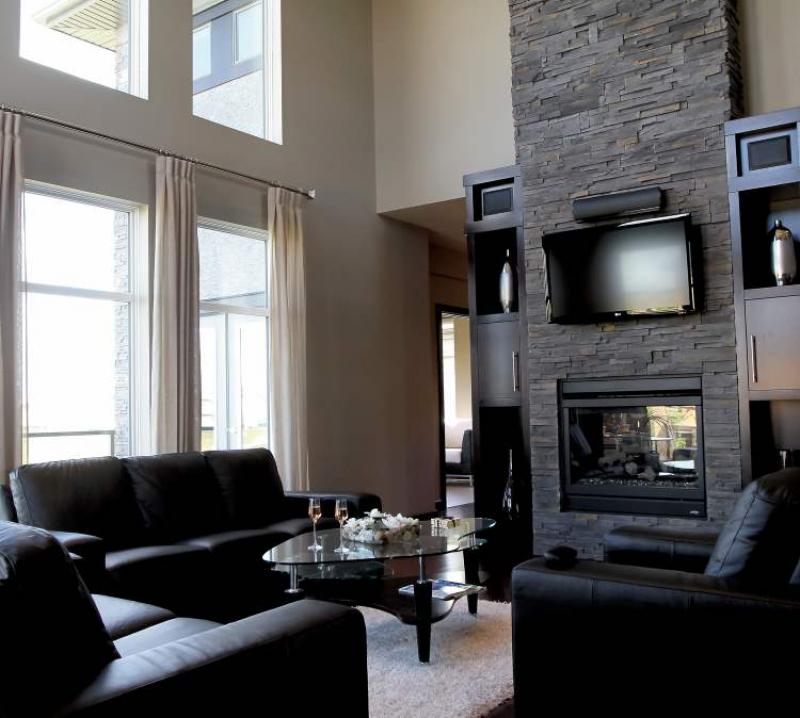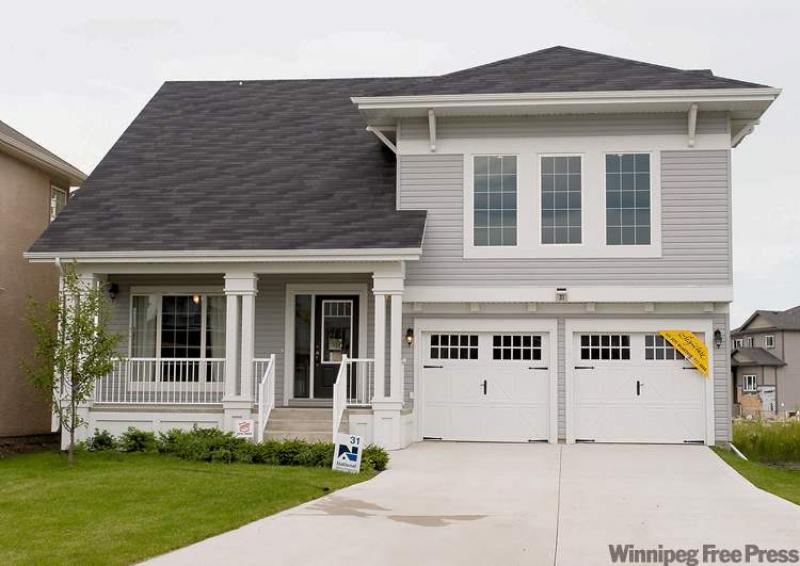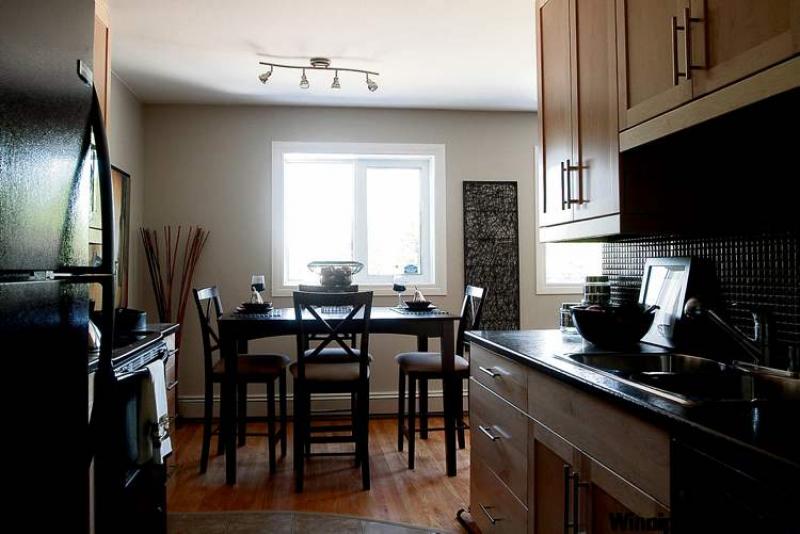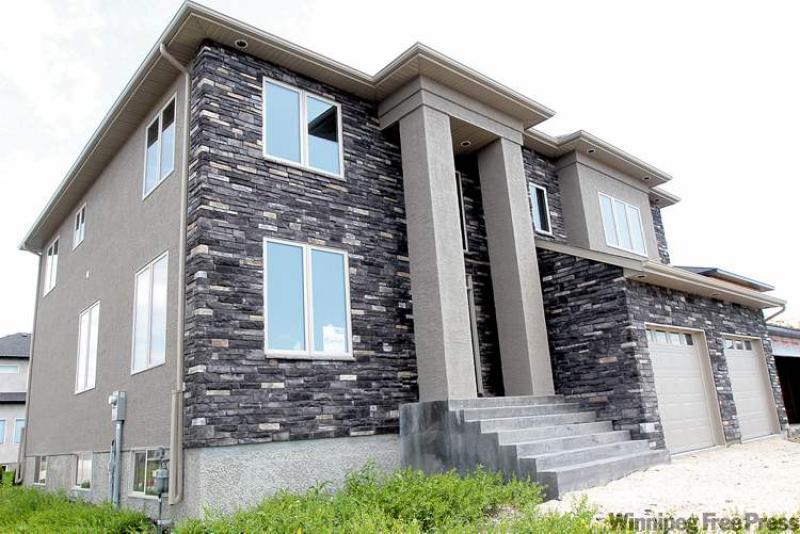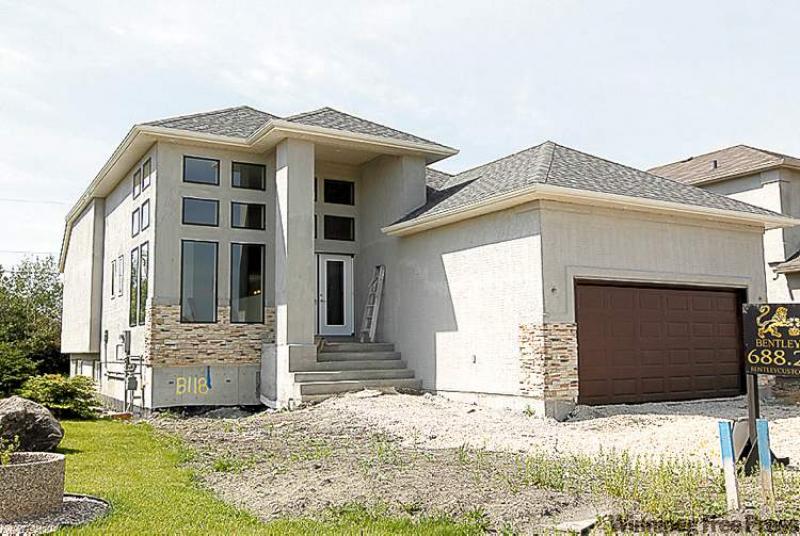New Homes
New Homes
Construction focus of new degree program
THOSE seeking to launch or advance a successful career in the building industry will get a boost this fall when classes get underway in Red River College's new Construction Management degree program.
Designed to help those in the skilled trades and engineering technologies bridge into further post-secondary education, the new offering focuses on residential construction, heavy construction and industrial/commercial construction. It is the first degree program approved by the province since Manitoba colleges received degree-granting authority in 2009.
Manitoba's construction industry is anticipating tremendous skilled labour shortages over the next six years, with senior supervisory positions being of the highest urgency.
Combining 26 months of academic study with three six-month co-operative education work terms, the new program entails 144 credit hours.
Students who graduate from the complete four-year program will earn a bachelor of technology in Construction Management.
"The Construction Management degree program will encompass technical foundation skills, some of the latest construction techniques, relevant work experience through co-operative education placements and courses that lead to other credentials, such as the Canadian Construction Association Gold Seal certification," says Dr. Dale Watts, dean of RRC's School of Construction and Engineering Technologies.
"With experience, graduates of this program will be well-prepared to provide leadership in the construction industry."
The new degree program will help graduates with their transition to managerial positions within the industry. It will offer focused and relevant learning that is anticipated to streamline the process of construction manager training. It will prove valuable to students by informing and helping employers to structure subsequent on-site work experience.
With a September 2010 start date and a limited number of seats available, the program is anticipated to be popular among recent high school graduates and those seeking to advance within the industry. The new degree program is being introduced following extensive consultation with industry leaders about current needs. The Manitoba Home Builders' Association, Winnipeg Construction Association and Manitoba Heavy Construction Association all participate on the program advisory committee.
"This represents a whole new opportunity for students who want to pursue a career in the construction industry," adds Dr. Watts. "There is now and will continue to be a significant demand for qualified construction managers in Manitoba to address the industry's needs."
Mike Moore is president of the Manitoba Home Builders' Association.
New Homes
Show homes proudly open throughout year
MANY people suffer from the misconception that new show homes are only open twice a year, during the Spring and Fall Parades of Homes. Although the two events receive the greatest publicity and feature 100 new homes at one time, the various new home builders of the Manitoba Home Builders' Association proudly feature and staff their show homes throughout the year.
We are at the midway point between the 2010 Spring Parade of Homes which ran March 6-21 and the 2010 Fall Parade of Homes Sept. 18-Oct. 9. So, for those who require a new home fix between Parades, now is an ideal time.
This spring featured terrific weather for March and September is always nice. However, you're guaranteed of short sleeves and slip-ons in July and August, making your tour that much more pleasurable.
So, how do you know what is open and where to look?
The Parade of Homes magazine produced by the Winnipeg Free Press is a staple for all Parade goers. If you haven't kept your magazine from last March, not to worry. You can still access it on the MHBA website at www.homebuilders.mb.ca. Although not all the homes featured are still show homes, it will bring you back to the builders and subdivisions you frequented in March. From there, you have a variety of options.
You can download the map on page 41 and visit the neighbourhoods that interest you, stopping in at the various show homes. On pages 42-67, all of the Spring Parade show homes are listed. Make note of those you are interested in, go to the MHBA website and connect to the link that will take you directly to the builder's site. Many will have their show homes listed along with the times they are open.
Even simpler, turn a couple of pages in today's paper and you will see a number of ads for show homes listed by MHBA builders.
No matter how you access them, the important thing to know is that the show homes are open for your viewing and visiting pleasure. Take your time, visit the locations that catch your fancy, talk to the sales representative and enjoy the introduction to your next new home.
Mike Moore is president of the Manitoba Home Builders' Association.
New Homes
Need for workers experiencing labour pains
THE Construction Looking Forward document was released this week by the Construction Sector Council and the research shows continued need for professionals in all trades and occupations. The regular but slowing growth from 2010 to 2018 has been highlighted by three distinct periods.
The Shallow Dip (2008-09) occurred immediately after the record years of construction activity. Combined with a worldwide recession, there was really nowhere for the employment requirement numbers to go but down.
Fortunately, in Manitoba, this was only a slight decrease. Residential, roads and related engineering were most impacted, but not to any great degree. A fast rebound was predicted.
The Ramping Up period (2010-2012) backs this prediction with new housing and utility-related engineering construction experiencing the biggest gains.
Finally, the High Plateau (2013-2018) shows annual increments between one and two per cent. The increased labour needs do not grow by large amounts, however it is important to note that the increase is experienced virtually every year, thereby exhibiting a constant need for labour market entry. Labour markets are already tight and so this extended growth pattern will only exacerbate the situation.
The Manitoba construction labour market experienced very little unemployment during the recession. Future labour requirements cannot be met through existing unemployment ranks. Recruiting must occur outside.
From 2010 through 2018, construction employment will rise by 6,200 jobs.
Add to this replacement requirements for 5,300 retirements occurring over this period and another 900 lost through other means and there is a massive shortfall of skilled trades workers. If prior employment entry patterns continue, we can expect 6,500 new entrants, thereby leaving this province with a 7,800-worker deficit.
The identified worker needs are spread out evenly throughout the various trades. In the next four years, projections are that 23 of the 28 trades will experience serious shortages of skilled labour. With the mobility that currently exists in the local industry, this means that virtually every single trade can ensure continued employment for at least the next eight years.
For additional information regarding 2010 Construction Looking Forward or the Labour Market Indicators in Manitoba's construction industry, visit the website of the Manitoba Construction Sector Council at www.mbcsc.com.
Mike Moore is president of the Manitoba Home Builders' Association.
New Homes
Membership does make a difference
LOOK for the logo.
That's the soundest advice I can give people who are looking for a builder, renovator or supplier. It's far from the last thing they will have to do in their quest for selection, but it's a great starting point.
Look for the logo -- the logo of the Manitoba Home Builders' Association.
Membership does make a difference. The difference is that industry professionals representing the entire industry have already done the preliminary work for you. They have screened the membership application and determined if the applicant has met certain industry qualifications. They have already done some of your homework.
Case in point; although coming soon, new home warranty has not been mandatory in Manitoba. However, in order for a builder to be a member of the MHBA, he must have been offering a recognized third-party warranty for a minimum of two years. That's not to say that there are not builders offering a proper warranty who are not members, it's just that your search can be narrowed down that much quicker when you look for the MHBA logo.
Many new home developments will only feature MHBA member builders. All Parade of Homes entries are from MHBA builders. Look for the logo.
Manitoba has developed the reputation as the renovation capital of Canada. How do you differentiate one renovator from another? Look for the RenoMark logo. A RenoMark renovator pledges to adhere to a nationally recognized, elevated set of standards and ethics. Become familiar with these and insist that your renovator operates at the same level.
Again, no one is telling you who to hire, but the informed consumer should be able to benefit from homework done by the professionals regarding their industry.
The same logic can be applied to suppliers. If the most qualified new home builders and renovators are purchasing their building supplies from companies they have thoroughly researched, why shouldn't the consumer benefit from this knowledge?
In conclusion, although there is never a simple answer regarding what and where to buy, there are sources to help you. One is professional industry associations such as the MHBA. Look for the logo.
Mike Moore is president of the Manitoba Home Builders' Association.

